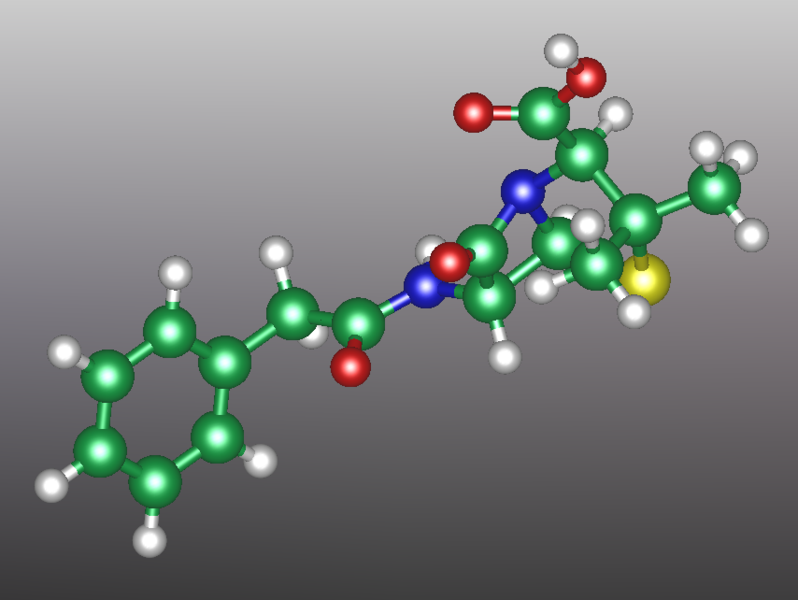Discovery of penicillin
Jump to navigation
Jump to search

Alexander Fleming was the first to suggest that the Penicillium mould must have an antibacterial substance, and the first to isolate the active substance which he named penicillin, but he was not the first to use its properties.
Timeline
| Year | ||
|---|---|---|
| Ancient | Greece & India | Many ancient cultures, including the ancient Greeks and ancient India, already used moulds and other plants to treat infection. This worked because some moulds produce antibiotic substances. However, they couldn’t distinguish or distill the active component in the moulds. |
| “traditional” | Serbia & Greece | There are many old remedies where mould is involved. In Serbia and in Greece, mouldy bread was a traditional treatment for wounds and infections. |
| “traditional” | Russia | Russian peasants used warm soil as treatment for infected wounds. |
| c. 150 BC | Sri Lanka | Soldiers in the army of king Dutugemunu (161 BC – 137 BC) are recorded to have stored oil cakes (a traditional Sri Lankan sweetmeat) for long periods in their hearth lofts before embarking on their campaigns, in order to make a poultice of the cakes to treat wounds. It is assumed that the oil cakes served the dual function of desiccant and antibacterial. |
| 1640 | England | The idea of using mould as a form of treatment was recorded by apothecaries, such as John Parkington, King’s Herbarian, who advocated the use of mould in his 1640 book on pharmacology. |
| 1870 | England | Sir John Scott Burdon-Sanderson, who started out at St. Mary’s Hospital 1852–1858 and as lecturer there 1854–1862 observed in 1870 that culture fluid covered with mould would produce no bacteria. |
| 1871 | England | Joseph Lister, an English surgeon and the father of modern antisepsis, was prompted by Burdon-Sandersons discovery to investigate and describes in 1871 that urine samples contaminated with mould did not allow the growth of bacteria and he also described the antibacterial action on human tissue on what he called Penicillium Glaucum. A nurse at King's College Hospital, whose wounds did not respond to any antiseptic, was then given another substance which cured her, and Lister’s registrar informed her that it was called Penicillium. |
| 1874 | England | William Roberts observed in 1874 that bacterial contamination is generally absent in cultures of the mould Penicillium glaucum. |
| 1875 | England | John Tyndall followed up on Burdon-Sanderson’s work and demonstrated to the Royal Society the antibacterial action of the penicillium fungus in 1875.[1] |
| 1877 | France | Louis Pasteur and Jules Francois Joubert in 1877 had observed that cultures of the anthrax bacilli, when contaminated with moulds, became inhibited. Some references say that Pasteur identified the strain as Penicillium notatum. |
| 1887 | France | Garré in 1887 found similar results. |
| 1895 | Italy | Vicenzo Tiberio of Naples made extracts of Penicillium mould and injected them into animals with virulent bacteria, with inconclusive results in 1895. |
| 1897 | France | Ernest Duchesne at École du Service de Santé Militaire in Lyons then independently discovered healing properties of a penicillium glaucum mould, even curing infected guinea pigs from typhoid and published a dissertation in 1897 but this was ignored by the Institut Pasteur. However Duchesne was himself using a discovery made by Arab stable boys, who were using moulds to cure sores on horses. He did not claim that the mould contained any antibacterial substance, but simply claimed that the mould somehow protected the animals.
|
| 1920 | Belgium | In the 1920s, Andre Gratia and Sara Dath observed a fungal contamination in one of their Staphylococcus aureus cultures that was inhibiting the growth of the bacterium. They identified this as a species of Penicillium and presented their observations as a paper. There was little attention to this paper. |
| 1923 | Costa Rica | An Institut Pasteur scientist, Costa Rican Clodomiro Picado Twight recorded the antibiotic effect of Penicillium in 1923. |
| 1929 | UK | Fleming noticed a halo of inhibition of bacterial growth around a contaminant blue-green mould on a Staphylococcus plate culture. He concluded that the mould was releasing a substance that was inhibiting bacterial growth. He grew a pure culture of the mould and discovered that it was Penicillium notatum. With help from a chemist he isolated what he later named “penicillin”. During the next twelve years, he grew and distributed the original mould, unsuccessfully trying to get help from any chemist that had enough skill to make a stable form of it for mass production. |
| 1938 | UK | In Oxford, Howard Walter Florey organized his large and very skilled biochemical research team, notable among them Ernst Boris Chain and Norman Heatley, to undertake the innovative work to produce a stable penicillin. |
| 1941 - 1943 | USA | Peoria, Illinois: Moyer, Coghill and Raper at the USDA Northern Regional Research Laboratory (NRRL) developed methods for industrialized penicillin production and isolated higher-yielding strains of the Penicillium fungus.[2][3] |
| 1941 - 1944 | USA | Brooklyn, New York: Jasper Kane and other Pfizer scientists develop the practical, deep-tank fermentation method for production of large quantities of pharmaceutical-grade penicillin.[4] |
References
- “History of Antiobiotics” from a course offered at Princeton University.
- Penicillin Man: Alexander Fleming and the Antibiotic Revolution, by Kevin Brown, St Mary's Trust Archivist and Alexander Fleming Laboratory Museum Curator. (2004) ISBN 0-7509-3152-3 (Most of the information in this article comes from this book)